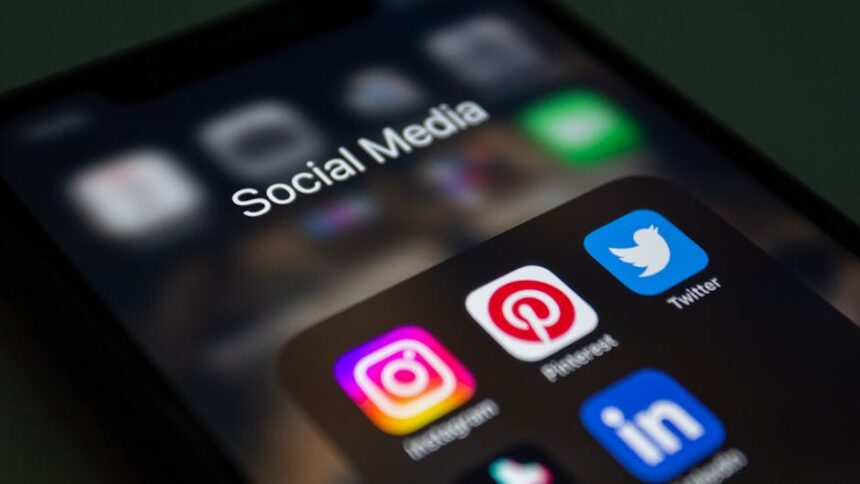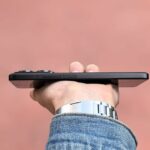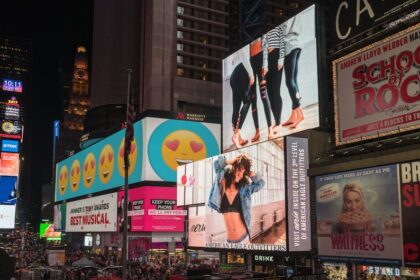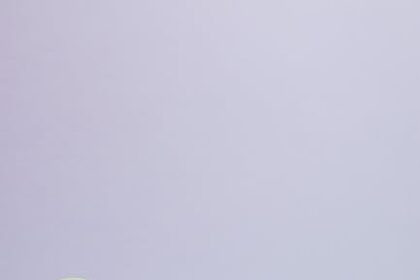Understanding the Unique Professional Landscape of LinkedIn for Ad Creative Optimization
Optimizing LinkedIn ad creatives begins with a fundamental understanding of the platform’s distinct professional ecosystem. Unlike other social media channels primarily used for personal connections or entertainment, LinkedIn is a professional network where users actively seek career development, industry insights, business opportunities, and credible information. This professional mindset profoundly influences how users engage with content, and by extension, how they perceive and react to advertising. Ad creatives must, therefore, align with this professional context, offering value, demonstrating expertise, and fostering trust rather than merely grabbing attention with sensationalism. The B2B nature of most LinkedIn advertising further refines this approach, necessitating creatives that speak to business challenges, showcase tangible solutions, and resonate with decision-makers seeking ROI and efficiency. The goal is not just to interrupt, but to integrate seamlessly into a professional’s feed, providing information that aids their work or company objectives.
The diverse array of ad formats available on LinkedIn each presents unique opportunities and constraints for creative expression. Single Image Ads are straightforward, focusing on a strong visual and concise text to convey a message quickly. Video Ads offer dynamic storytelling, allowing for more complex narratives, product demonstrations, or thought leadership content. Carousel Ads provide a multi-card experience, ideal for progressive storytelling, showcasing multiple features, or presenting different aspects of a solution. Document Ads, a less common but powerful format, allow advertisers to natively promote whitepapers, case studies, or e-books directly within the feed, turning the creative itself into valuable content. Text Ads are minimalist, relying on compelling headlines and brief descriptions, often used for hyper-targeted campaigns or retargeting. Spotlight Ads and Follower Ads are less about traditional creative visuals and more about direct calls to action or brand promotion on the right-hand rail or through follow prompts, respectively. Each format demands a tailored creative strategy, recognizing its inherent strengths and how users typically interact with it. The optimal creative for a video ad, for instance, will differ significantly from that of a document ad, not just in medium but in pacing, content depth, and call to action.
Core Principles of Effective LinkedIn Ad Creatives for Maximum Impact
At the heart of optimizing LinkedIn ad creatives lie several universally applicable principles that transcend specific ad formats. Relevance is paramount; the creative must resonate deeply with the target audience’s professional needs, pain points, and aspirations. This goes beyond mere demographic targeting; it involves understanding psychographics and industry-specific challenges. A creative for an HR professional will highlight different benefits and use different terminology than one for a marketing director, even if both are advertising the same core product. Clarity ensures that the ad’s message, value proposition, and intended action are immediately comprehensible. In a scrolling feed, ambiguity is the enemy of engagement. Users should instantly grasp what is being offered and why it matters to them. A clear, singular Call to Action (CTA) guides the user to the next step, removing friction and ambiguity. Whether it’s “Download Now,” “Learn More,” or “Request a Demo,” the CTA should be prominent, actionable, and aligned with the campaign’s objective.
Brand consistency across all ad creatives builds recognition and trust. Visuals, tone of voice, messaging, and even the choice of fonts and colors should align with the overall brand identity. This consistency reinforces professionalism and makes the brand instantly identifiable, especially important in a B2B context where reputation and reliability are key. Finally, storytelling, even in concise ad formats, can elevate a creative from a mere advertisement to an engaging piece of content. Professional storytelling on LinkedIn often involves framing a common industry problem and then presenting the advertised solution as the hero, or sharing a success story that inspires action. This narrative approach helps users connect on a deeper level, transforming a transactional interaction into a more meaningful engagement. By integrating these core principles, advertisers can move beyond simply displaying an ad to truly captivating their professional audience and driving desired outcomes.
Deep Dive into Image Ad Creative Optimization for LinkedIn
Single Image Ads are the most common ad format on LinkedIn and offer a powerful way to convey a message quickly and effectively. Optimization begins with the visual itself: high-resolution, professional imagery is non-negotiable. Blurry, pixelated, or amateur-looking images instantly undermine credibility on a professional platform. The choice of image should be deliberate and strategic. Often, this means opting for professional stock photography that reflects diversity and inclusion, or custom graphics that visually represent data, processes, or abstract concepts related to your solution. Using diagrams, flowcharts, or infographics can be particularly effective when explaining complex B2B solutions or demonstrating ROI, transforming data into an easily digestible visual story.
Consider the subject matter of your image. Headshots of key personnel or industry experts can foster a sense of personal connection and thought leadership, particularly effective for promoting webinars or professional services. Team shots can humanize a brand and showcase a collaborative culture. Product shots, especially in-context usage shots, help users visualize the solution in their own professional environment. For software, this might mean a clean, well-designed screenshot highlighting a key feature, not just a generic logo. Text overlay on images should be used judiciously, adhering to LinkedIn’s recommendations for text-to-image ratio (generally advising against more than 20% text) and ensuring readability. The text should be large enough, in a contrasting color, and convey a critical, concise message that complements the main ad copy. A/B testing various visual elements—different imagery styles, color palettes, or even the subtle placement of a logo—can yield valuable insights into what resonates most with specific audience segments. The objective is to select an image that not only captures attention but also reinforces the ad’s core message and compels the viewer to read the accompanying text.
Mastering Video Ad Creative Optimization on LinkedIn
Video Ads are arguably the most engaging format on LinkedIn, capable of conveying rich information and evoking stronger emotional responses than static images. However, their effectiveness hinges entirely on meticulous creative optimization. The cardinal rule for LinkedIn video ads, as with most digital video, is to hook the viewer within the first 3 seconds. Professionals are busy; if your video doesn’t immediately offer value or intrigue, they will scroll past. This means front-loading your most compelling visual, a surprising statistic, or a clear problem statement. Optimal video length is highly dependent on the campaign objective. For awareness, shorter videos (15-30 seconds) that deliver a concise brand message or a single compelling insight often perform best. For consideration or conversion, longer formats (up to 60-90 seconds, sometimes even 2-3 minutes for deep dives) can be effective for detailed product demonstrations, testimonials, or educational content, provided they remain engaging throughout.
The scripting and production quality of LinkedIn video ads must reflect professionalism. Shaky cam, poor audio, or amateur editing are immediate credibility killers. Invest in good lighting, clear audio, and professional editing. The narrative should be structured: problem, solution, benefits, and a clear call to action. For B2B videos, demonstrating the product or service in action, showcasing its interface, or illustrating a complex process can be incredibly powerful. Animated explainer videos are excellent for simplifying intricate concepts. Testimonials from satisfied clients or interviews with industry experts lend immense credibility and social proof, resonating well with a professional audience seeking verified solutions.
A critical, yet often overlooked, element is the inclusion of subtitles or closed captions. A significant percentage of LinkedIn users watch videos with the sound off, especially when browsing in open-plan offices or public spaces. Without captions, your message is lost. Ensure captions are accurate, easy to read, and synchronized with the audio. Finally, the call to action should not only be clear in the accompanying ad text but also subtly integrated within the video itself, perhaps as a final frame with a URL or a verbal prompt. Consider using LinkedIn’s video lead gen forms to capture leads directly from the video experience, reducing friction and improving conversion rates. The goal is to create a video that informs, inspires, and ultimately converts, respecting the professional context of the LinkedIn feed.
Leveraging Carousel Ad Creatives for Storytelling on LinkedIn
Carousel Ads offer a unique opportunity to tell a progressive story, showcase multiple product features, or present diverse aspects of a service within a single ad unit. This format is inherently engaging due to its interactive nature, encouraging users to swipe through cards for more information. To optimize carousel creatives, the narrative flow across cards is paramount. Each card should build upon the previous one, leading the viewer through a logical progression. This could be a problem-solution sequence (Card 1: Problem, Card 2: Solution Overview, Card 3: Feature 1, Card 4: Feature 2, Card 5: Benefit Summary), a step-by-step guide to achieving an outcome, or a multi-part case study demonstrating success.
Visually, each card in a carousel should be distinct yet cohesive, maintaining brand consistency while offering fresh content. Use high-quality images, graphics, or even short video clips on individual cards to keep the experience dynamic. For showcasing multiple product features, dedicate a card to each key feature, perhaps with an accompanying icon or concise description. When illustrating a process, use numbers or directional arrows to guide the viewer. For case studies, Card 1 might be the client challenge, Card 2 the implemented solution, Card 3 the key results, and Card 4 a testimonial. The headline and description for each card are crucial; they must be concise and compelling, adding context to the visual.
Optimizing for mobile swiping is critical, as a majority of LinkedIn users access the platform on their smartphones. Ensure that text is legible on smaller screens and that the visuals are impactful even without detailed examination. Consider the order of your cards carefully, placing the most compelling information or a strong hook on the first few cards to encourage further engagement. A/B testing different narratives or card sequences within the carousel can reveal which storytelling approach resonates most effectively with your audience. The final card should always include a clear call to action, reinforcing the objective of the ad, whether it’s to download a resource, visit a landing page, or request a demo. The power of carousel ads lies in their ability to deliver more detailed information in an interactive and visually appealing manner, guiding the prospect through a narrative journey.
Optimizing Document Ad Creatives for Lead Generation and Awareness
Document Ads, while perhaps less visually flashy than video or carousel formats, are incredibly powerful for lead generation and thought leadership on LinkedIn. They allow advertisers to promote long-form content – such as whitepapers, e-books, research reports, or detailed case studies – directly within the feed, turning the ad creative itself into a valuable resource. The core of document ad optimization lies in the quality and relevance of the underlying PDF content. This content must be genuinely valuable, offering insights, solutions, or data that addresses the target audience’s professional needs. It’s not merely an advertisement; it’s a piece of intellectual property designed to educate and inform.
The creative aspect of a document ad primarily focuses on the compelling cover image that is displayed in the LinkedIn feed. This cover image acts as the primary visual hook. It should be high-resolution, professional, and clearly indicate the document’s topic or value. Use strong, clear typography for the title of the document on the cover, ensuring it is easily readable even at a glance. Visuals on the cover might include abstract graphics, data visualizations, or a relevant professional image that sets the tone for the content within. The ad copy accompanying the document ad must clearly articulate the value proposition of downloading the document. Why should a busy professional take the time to read this? Highlight key takeaways, exclusive data, or solutions to pressing industry challenges. Phrases like “Unlock exclusive insights,” “Download our latest research,” or “Get your free guide to X” are effective.
A key advantage of document ads is the seamless lead generation experience. When a user clicks to view the document, LinkedIn can pre-fill a lead generation form with their profile information, significantly reducing friction for download. Ensure your lead gen form questions are concise and only ask for necessary information, balancing lead quality with conversion rates. The content itself, once downloaded, should live up to the promise made in the ad. If the content falls short, it can damage brand credibility. This format is particularly effective for middle-of-funnel (MOFU) strategies, capturing leads who are already aware of a problem and seeking solutions. The creative is not just the cover image, but the entire content piece – it must deliver on the promise, providing enough value to move the prospect further down the sales funnel. Regular review of download rates and lead quality will inform ongoing optimization of both the cover creative and the document content itself.
Crafting Compelling Ad Copy for LinkedIn Ads
Beyond the visuals, the accompanying ad copy is the textual heart of any LinkedIn ad creative. Its purpose is to contextualize the visual, articulate the value proposition, and compel the desired action. Optimizing ad copy involves meticulous attention to headlines, main body text, and calls to action. The headline is arguably the most critical piece of text, as it’s often the first element a user reads. It must be catchy, benefit-driven, and ideally, keyword-rich to grab attention within the professional feed. Instead of merely stating a product name, focus on the outcome or solution it provides (e.g., “Boost Your Sales Productivity by 30%” rather than “New CRM Software”). Incorporating industry-specific keywords ensures relevance to your target audience.
The main ad text, also known as the description or body copy, is where you elaborate on your value proposition. LinkedIn allows for longer text descriptions, which can be expanded by the user with a “…see more” prompt. This offers a strategic balance: lead with a concise, impactful opening that captures attention and provides the core message (visible without clicking “see more”), then provide more detail, social proof, and specific benefits in the expanded section. Use a problem-solution framework: identify a common pain point for your audience, present your offering as the clear solution, and then articulate the unique benefits and competitive advantages. Incorporate social proof (e.g., “Trusted by 5,000+ businesses,” “Award-winning solution”) to build credibility.
The tone of voice in LinkedIn ad copy should be professional yet engaging. Avoid overly salesy or jargon-heavy language. While emojis can be used to break up text and add visual appeal, they should be employed judiciously and only if they align with your brand’s professional image and your audience’s expectations. Overuse can undermine credibility. Personalization tokens, if available through your ad platform setup, can subtly enhance relevance by addressing the user by their company or job title. For example, “Is [Company Name] struggling with data analytics?” The conciseness versus detail debate for LinkedIn ad copy leans towards a blend: deliver core value quickly, but offer depth for those who wish to explore further. Regularly A/B test different headlines, opening sentences, and calls to action to see what resonates most with your specific audience segments. The copy should ultimately guide the user smoothly towards the desired next step, whether it’s downloading a report, registering for an event, or requesting a demo.
The Power of Calls to Action (CTAs) in LinkedIn Ad Creatives
The Call to Action (CTA) is the directive that guides a user to the desired next step after engaging with your ad creative. Its optimization is not merely about choosing the right button, but about making it irresistible and seamlessly integrated into the overall ad experience. LinkedIn offers a range of standard CTA buttons, such as “Learn More,” “Download,” “Sign Up,” “Register,” “Apply,” “Request Demo,” “View Quote,” and “Visit Company.” The selection of the correct CTA button is critical and must align perfectly with your campaign objective and the stage of the buyer’s journey you are targeting. For awareness campaigns, “Learn More” or “Visit Website” might suffice. For lead generation, “Download” (for a whitepaper), “Register” (for a webinar), or “Request Demo” are more appropriate. Misalignment here creates friction and reduces conversion rates.
Beyond the button itself, the CTA’s effectiveness is heavily dependent on its contextualization within the creative. The ad copy and visual should naturally lead the user to want to click the CTA. It shouldn’t feel like an abrupt command but a logical progression. For example, if your ad copy discusses the benefits of a new e-book, the CTA “Download Now” makes perfect sense. If your video demonstrates a software solution, “Request a Demo” directly addresses the implied need for further exploration. Clarity is paramount: there should be no ambiguity about what happens when the user clicks the button. Will they be taken to a landing page, an instant form, or initiate a download?
Injecting a subtle sense of urgency or exclusivity can further boost CTA performance, though this must be done professionally without resorting to aggressive sales tactics. Phrases like “Limited spots available,” “Claim your free trial today,” or “Exclusive insights” can motivate immediate action. A/B testing different CTA button options and their accompanying microcopy (e.g., “Download Now” vs. “Get Your Free Guide”) can provide valuable insights into what drives higher conversion rates for your specific audience. The positioning of the CTA button also matters; LinkedIn places it prominently, but ensure your visual and textual creative elements draw the eye towards it. Ultimately, an optimized CTA is a clear, concise, and compelling directive that removes friction and propels the user towards the desired conversion event.
Advanced Creative Strategies and A/B Testing on LinkedIn
True optimization of LinkedIn ad creatives extends beyond basic best practices into advanced strategies, primarily driven by rigorous A/B testing and continuous iteration. One powerful advanced strategy is hyper-personalization, enabled by LinkedIn’s precise audience targeting capabilities. Instead of a single ad creative for a broad audience, tailor variations of your creative to specific segments based on job title, industry, company size, or even skills. This means not just changing the target audience for the same ad, but actively modifying the headline, main copy, and even imagery to speak directly to the unique pain points and aspirations of each micro-segment. For instance, an ad for a project management tool could have one creative tailored for IT Managers highlighting integration, and another for Marketing Directors emphasizing cross-functional collaboration.
A/B testing is the engine of advanced creative optimization. Systematically test different elements of your ad creative to identify what drives the best performance. This includes:
- Varying Value Propositions: Test different primary benefits or problem statements. Does your audience respond better to cost savings, efficiency gains, or increased revenue?
- Visual Styles: Experiment with corporate vs. modern, illustrative vs. photographic, or abstract vs. literal imagery. For video, test different intro hooks or pacing.
- Ad Copy Length and Tone: Compare short, punchy copy against more detailed explanations. Test formal vs. slightly more conversational tones (within professional bounds).
- Headlines: Crucial for initial engagement. Test benefit-driven headlines against question-based ones or those featuring statistics.
- Calls to Action: As discussed, test different CTA buttons and the microcopy around them.
- Landing Page Message Matching: Crucially, ensure the messaging on your ad creative seamlessly matches the messaging on your landing page. Discrepancies create cognitive dissonance, leading to high bounce rates. If your ad promises a “Free Demo,” the landing page should immediately offer a free demo, not a product brochure.
Understanding the metrics is vital for effective A/B testing. Beyond simple impressions and clicks, focus on Click-Through Rate (CTR) for initial engagement, Conversion Rate (CVR) for lead generation campaigns, Cost Per Lead (CPL) for efficiency, and for video ads, video view rates (25%, 50%, 75%, 100% completion) and average view duration. These metrics provide deeper insights into how engaging your creative truly is. Iterative testing is key; don’t just run one test and stop. Use the learnings from each test to inform the next iteration, constantly refining your creatives for optimal performance. This data-driven approach to creative optimization ensures that your LinkedIn advertising budget is utilized as effectively as possible, continuously improving ROI.
Ethical Considerations and LinkedIn Ad Policies in Creative Design
Adhering to ethical considerations and LinkedIn’s specific advertising policies is not merely a compliance issue but a fundamental aspect of building trust and long-term success on the platform. Disregarding these can lead to ad rejection, account suspension, and, more importantly, damage to your brand’s reputation among professionals. Authenticity and transparency are paramount. Your ad creatives must genuinely represent your product, service, or brand. Avoid misleading claims, exaggerated promises, or deceptive imagery. For instance, if you’re advertising a software, don’t use a screenshot that heavily enhances its features beyond reality. Be transparent about what you are offering and what the user can expect upon clicking.
LinkedIn has clear guidelines regarding prohibited content and practices. These include, but are not limited to:
- Discrimination: Creatives must not promote discrimination based on race, ethnicity, origin, religion, gender, age, disability, sexual orientation, or any other protected characteristic.
- Sensitive Content: Ads cannot contain sexually explicit, violent, hateful, or otherwise inappropriate content.
- Misleading or Deceptive Content: This covers false claims, misrepresentations, or anything that could deceive users.
- Personal Attacks or Harassment: Creatives must maintain a respectful, professional tone.
- Infringement of Intellectual Property: Do not use copyrighted material, trademarks, or brand assets without explicit permission.
- Political or Highly Sensitive Social Issues: While LinkedIn is a platform for professional discourse, direct political advertising is generally restricted or requires specific authorizations in certain regions. Creatives that could be perceived as highly divisive or polarizing on social issues should be approached with extreme caution, if at all.
- Privacy Violations: Especially relevant for lead generation forms. Ensure any data collected complies with relevant privacy regulations like GDPR, CCPA, and others. Your privacy policy should be easily accessible from your landing page.
Beyond these prohibitions, LinkedIn also has guidelines on creative elements such as text-to-image ratio (to ensure readability and prevent ads from looking overly promotional), minimum image resolution, and video specifications. Regularly review LinkedIn’s advertising policies (accessible via their Business Help Center) as they can be updated. When designing creatives, consider how they might be perceived by a diverse, global professional audience. What might be acceptable in one cultural context might not be in another. When in doubt, err on the side of caution and professionalism. A rejected ad due to policy violation is not just a lost opportunity but also a signal to LinkedIn that your account might require closer scrutiny. Proactive adherence to these guidelines ensures smooth campaign execution and builds a reputable brand presence.
Tools and Resources for Enhancing LinkedIn Ad Creatives
Optimizing LinkedIn ad creatives can be significantly streamlined and enhanced through the intelligent use of various tools and resources. These range from platform-native analytics to third-party design suites and content repositories. Foremost among these is LinkedIn Campaign Manager’s analytics dashboard. This provides invaluable first-party data on your ad performance, including impressions, clicks, CTR, conversions, and video view rates. By meticulously analyzing this data, advertisers can identify which creatives are performing best (and worst), pinpointing elements that resonate or fall flat. A/B test results are also clearly presented here, allowing for data-driven iteration. Understanding these metrics is the cornerstone of creative optimization.
For visual design, third-party design tools are indispensable. Professional-grade software like Adobe Photoshop, Illustrator, and Premiere Pro are industry standards for creating high-quality images, graphics, and videos. For teams without dedicated designers, more accessible tools like Canva, Crello, or Adobe Express (formerly Spark) offer user-friendly interfaces and pre-designed templates suitable for LinkedIn ad formats, enabling quick creation of professional-looking visuals and basic animations. These tools often have built-in libraries of stock assets, though it’s always advisable to use unique, custom visuals where possible.
Stock photo and video libraries such as Shutterstock, Adobe Stock, Getty Images, and Unsplash (for free, high-quality images) are excellent resources for sourcing professional imagery and video clips if custom shoots are not feasible. When selecting stock assets, prioritize authenticity and relevance, avoiding overly generic or obviously “stock” looking visuals. Curated collections focusing on specific industries or professional scenarios can be particularly useful.
For enhancing ad copy and ensuring clarity, grammar and writing tools like Grammarly or Hemingway Editor can help refine your messaging, improve readability, and catch errors before your ads go live. While not directly a creative tool, heat mapping and session recording tools (e.g., Hotjar, Crazy Egg) on your landing pages can provide indirect but crucial insights. If users are bouncing immediately after clicking your ad, it might indicate a disconnect between your ad creative and the landing page experience, or that the landing page itself isn’t clear enough. This feedback can then inform adjustments to your ad creative’s promise and the subsequent landing page.
Finally, staying updated on industry trends and LinkedIn’s own marketing insights is a continuous resource. Following LinkedIn’s marketing blog, attending their webinars, and participating in industry forums can provide valuable foresight into evolving best practices, new ad features, and what types of content are currently performing well for similar businesses. Leveraging these tools and resources systematically empowers advertisers to create, test, and refine their LinkedIn ad creatives for maximum impact and ROI.
Integrating Creatives with the Full Marketing Funnel on LinkedIn
Effective LinkedIn ad creative optimization extends beyond individual ad performance to how creatives function as part of a cohesive full-funnel marketing strategy. Different stages of the buyer’s journey (awareness, consideration, conversion, and retention) demand distinct creative approaches to resonate with prospects at their specific point of engagement.
Top-of-Funnel (TOFU) Awareness Creatives: At this stage, the goal is to introduce your brand, solution, or a general industry problem to a broad, relevant audience. Creatives should be highly engaging and educational, not overtly salesy.
- Visuals: High-impact, visually striking images or short, captivating video ads (15-30 seconds) that pose a question, highlight a key trend, or share a surprising statistic.
- Copy: Focus on problem identification, industry insights, or thought leadership. Emphasize value without immediately pushing for a sale.
- CTAs: Softer CTAs like “Learn More,” “Read Article,” or “Watch Video.” The objective is to pique interest and drive initial engagement with your content or brand.
- Examples: An infographic summarizing industry trends, a short explainer video on a common business challenge, or a carousel ad telling a high-level brand story.
Middle-of-Funnel (MOFU) Consideration Creatives: Here, prospects are aware of their problem and actively seeking solutions. Creatives should provide more detailed information and demonstrate how your offering specifically addresses their needs.
- Visuals: Product demonstration videos (30-90 seconds), detailed infographics, case study overviews in carousel format, or engaging document ad covers.
- Copy: Focus on specific features, benefits, competitive advantages, and social proof (testimonials, client logos). Clearly articulate your unique selling proposition (USP).
- CTAs: Mid-funnel CTAs such as “Download Whitepaper,” “Register for Webinar,” “View Case Study,” “Get the Guide.” The goal is to capture leads or drive deeper engagement with valuable content.
- Examples: A video showcasing a software’s key features, a document ad for an in-depth industry report, or a carousel ad breaking down a successful client implementation.
Bottom-of-Funnel (BOFU) Conversion Creatives: At this stage, prospects are ready to make a purchasing decision. Creatives need to be highly persuasive, reinforcing trust and removing any final barriers to conversion.
- Visuals: Direct product shots, screenshots of key conversion steps, testimonial videos from key clients, or images highlighting limited-time offers.
- Copy: Emphasize immediate value, ROI, urgency (if applicable and genuine), and direct calls to action. Overcome objections, reiterate benefits, and provide strong social proof.
- CTAs: Strong, direct CTAs like “Request a Demo,” “Get a Quote,” “Start Free Trial,” “Contact Sales,” “Sign Up Now.”
- Examples: A video featuring a compelling client success story, an image ad promoting a special offer with a direct “Sign Up” button, or a text ad for hyper-targeted retargeting that emphasizes a final push.
Retargeting Creative Considerations: For prospects who have previously engaged with your content or visited your website, retargeting creatives should reference their prior interaction and offer the next logical step. These can be highly personalized and specific, speaking directly to their demonstrated interest. For example, if someone downloaded a whitepaper, a retargeting ad might offer a product demo. If they viewed a demo but didn’t convert, the ad might present a specific case study or a limited-time offer. The creative should feel like a natural continuation of their journey, not a fresh interruption.
By thoughtfully aligning LinkedIn ad creatives with each stage of the marketing funnel, businesses can ensure that their advertising efforts are not only optimized for individual ad performance but also contribute to a coherent, effective journey that guides prospects from initial awareness to loyal customer status. This holistic approach maximizes ROI and strengthens the entire sales pipeline. Each creative decision, from the chosen ad format to the specific words in the ad copy, must be made with the funnel stage and the user’s mindset firmly in view.











